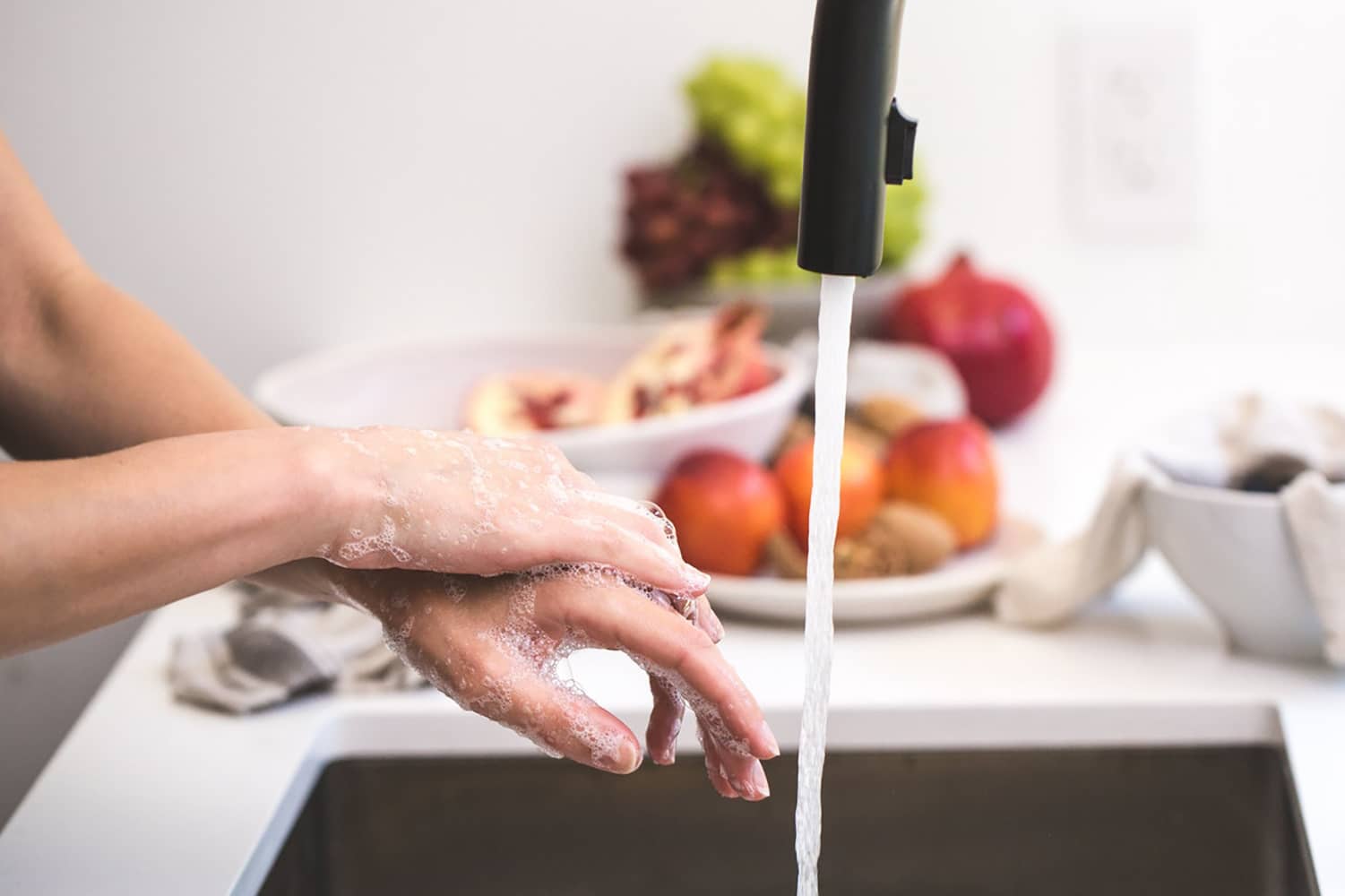


Much like the Dirty Dozen and the Clean Fifteen, the EWG has produced a list that contains 12 cancer-causing ingredients that have made its way into our beauty products, packaging and home goods.
“Scientists are only beginning to investigate how certain chemicals may interact to contribute to a cancer development. But given that we live in a sea of chemicals, it makes sense to begin reducing exposures to ones we know are bad actors.”- EWG
1. Bisphenol A (BPA): Most of us know what BPA is. It’s a chemical that’s used in plastic lining of food and beverage containers, and it’s been linked to an array of cancers. Though some companies are phasing out of using BPA in their packaging, it’s still found in plastics labeled “PC” and “recycling #7.” How to avoid this? Opt for fresh foods whenever possible over canned. However, if you use canned food make sure they’re labeled “BPA Free.” Also, avoid getting receipts from cash registers- they’re typically printed on thermal paper coated with BPA.
2. Atrazine: One of the most widely used herbicides, applied to the majority of U.S. grown corn. It also can be found in drinking water supplies, especially in agricultural areas. To avoid, be sure to use a water filter.
3. Organophosphate Pesticides: Widely used insecticides that target the nervous system of insect pests. To avoid, buy organic produce (when possible) to limit contamination of residue from the pesticide.
4. Dibutyl Phthalate (DBP): Though some companies have stopped using DBP in nail polish it’s still commonly used in soft flexible plastics like shower curtains, raincoats, food wraps and bowls. You can avoid this buy not using plastic storage containers, and by limiting the use of PVC plastics. In short, check your nail polish if you use any, and look for more natural alternatives to soft plastics.
5. Lead: Lead harms almost every system in the body and has been linked to a large number of health effects, including lowered IQ, kidney damage, nervous system and hormone issues.
6. Mercury: Not only is mercury exposure extremely important to avoid during pregnancy, but it’s important for everyone to keep their levels at an optimal range. Canned albacore tuna, swordfish, and some types of sushi are especially high so just be aware of what your intaking.
7. PFCs: PFCs are mainly used in water, grease and stain-repellent coatings. To avoid, find products that haven’t been pre-treated with stain repellents and skip home-applied treatments of carpets and furniture. You can also limit fast food and greasy takeout foods that typically come in PFC-treated wrappers.
8. Phthalates: These are common industrial chemicals used in PVC plastics to make vinyl toys soft, as well as solvents and synthetic fragrances. Avoid products that use the word “fragrance” on the ingredient list- it’s usually code word for phthalates because they don’t have to be explicitly labeled.
9. Diethylhexyl Phthalate (DEHP): The most commonly used phthalates that may be associated with alterations in thyroid hormone levels. How to avoid them? Use the same rules of avoidance (listed above).
10. PBDEs: These are chemical fire retardants widely used in polyurethane foam products that have been manufactured before 2005. This includes upholstered furniture, mattresses, pillows, couches, carpet padding, and electronics. So just be sure to avoid foam products manufactured before 2005 and look for those made after 2014. Read labels and visit manufacturer’s’ websites and don’t be afraid to ask which chemicals have been used on their products.
11. Triclosan: An ingredient that’s found in many liquid hand and dishwashing soaps as well as personal care products. Triclosan is linked to cancer and heart disease and is still an ingredient in many antibacterial products. Using essential oils and DIY cleansers are a safer approach to cleaning.
12. Nonylphenol: Widely used ingredient in industrial and consumer products such as detergents, paints, personal care products and plastics. Avoid by using more natural and nontoxic products.
ダーティーダゼンやクリーンフィフティーンのように、EWGは美容製品、梱包材、家庭用品に含まれる12種類のがん原因成分のリストを作成しました。
「科学者は、どの種類の化学物質がどのように相互作用してがんの発症に寄与しているかを調べ始めたばかりです。 しかし、私たちは化学物質の海に住んでいることを考えると、悪さの原因を知る事でどのように減少させればよいのかを理解できるようになります。」 - EWG
1.ビスフェノールA (BPA):私たちのほとんどはBPAが何であるか知っています。 これは食品や飲料容器のプラスチックライニングに使用される化学物質であり、一連の癌に関連しています。 BPAの使用を段階的に廃止しようとしている企業もありますが、「PC」と「リサイクル#7」と呼ばれるプラスチックはまだ存在しています。 できるだけ缶詰ではなく、新鮮な食べ物を選ぶ事で防ぐ事ができます。 ただし、缶詰食品を使用する場合は、「BPAフリー」というラベルが付いていることを確認してください。また、レジから出るレシートも受け取ることは避けてください。それらはBPAでコーティングされています。
2.アトラジン:米国で栽培された大部分のトウモロコシに使用されていて、最も広く使用されている除草剤の1つ。 また、飲料水でも含まれている物があり、特に農業地域で多く見られます。 避けるために、必ず水フィルターを使用してください。
3.有機リン殺虫剤:昆虫や害虫の神経系を標的とする、広く使用されている殺虫剤です。 これらを避けるためには、(可能であれば)有機農産物を購入して残留農薬の汚染を制限します。
4.フタル酸ジブチル(DBP): DBPの使用を中止している企業もありますが、シャワーカーテン、レインコート、フードラップ、ボウルなどの柔軟性のあるフレキシブルプラスチックでは、まだ一般的に使用されています。 プラスチック製の貯蔵容器を使用せず、PVCプラスチックの使用を制限することで、この購入を避けることができます。 要するに、あなたが使用しているマニキュアをチェックして、もし使用されているようであればもっと自然的な物を探してください。
5.電気導線:鉛は身体のほとんどすべてのシステムに害を及ぼし、IQの低下、腎臓障害、神経系およびホルモンの問題を含む多数の健康影響に結びついています。
6.水銀:妊娠中に水銀曝露を避けることが非常に重要なだけでなく、すべての人が適切なレベルの範囲に取り扱うことが重要です。 マグロ、魚介類、いくつかのタイプの缶詰やお寿司の一部にも含まれています。なるべく摂取しないように充分に注意する事が必要です。
7.PFCs: PFCは主に水、グリース、防汚塗料に使用されています。 避けるには、汚れの忌避剤で前処理されていない製品を見つけ、カーペットや家具など家庭での使用を避けます。 また、PFC処理された包材が多く使用されているファーストフードや脂っこいテイクアウト食品をなるべく購入しない事でも避けられます。
8.フタル酸塩:これらはPVC製のプラスチックに使用される一般的な工業用化学薬品であり、ビニール製のおもちゃを柔らかくするだけでなく、溶剤や合成香料も製造しています。 成分リストに「フレグランス」という言葉を使用する製品は避けてください。これは、通常、フタレートのためのキーワードです。なぜなら、それは明示的にラベル付けする必要がないからです。
9.フタル酸ジエチルヘキシル(DEHP): 甲状腺ホルモンのレベルの変化に関連する可能性のある最も一般的に使用されるフタル酸エステル。 どのように避ければ? 上記と同様の回避方法に従ってください。
10.PBDEs:これらは、2005年以前に製造されたポリウレタンフォーム製品に広く使用されている化学的難燃剤です。これには、布張り家具、マットレス、枕、ソファ、カーペットパッディング、および電子機器が含まれます。 よって、2005年以前に製造されたフォーム製品は避け、2014年以降に作られたフォーム製品を探してください。ラベルを読んでメーカーのウェブサイトにアクセスし、製品に使用されている化学物質について尋ねることを恐れないでください。
11.トリクロサン: 多くのハンド用液体洗剤や食器洗い用洗剤、パーソナルケア製品に含まれる成分。 トリクロサンはがんや心臓病に関連しており、依然として多くの抗菌製品の成分です。 エッセンシャルオイルとDIYクレンザーを使用する方がより安全な洗浄方法です。
12.ノニルフェノール:洗剤、塗料、パーソナルケア製品、プラスチックなどの工業用および消費者製品で広く使用されている成分。 より自然で無毒な製品を使用することで避けてください。